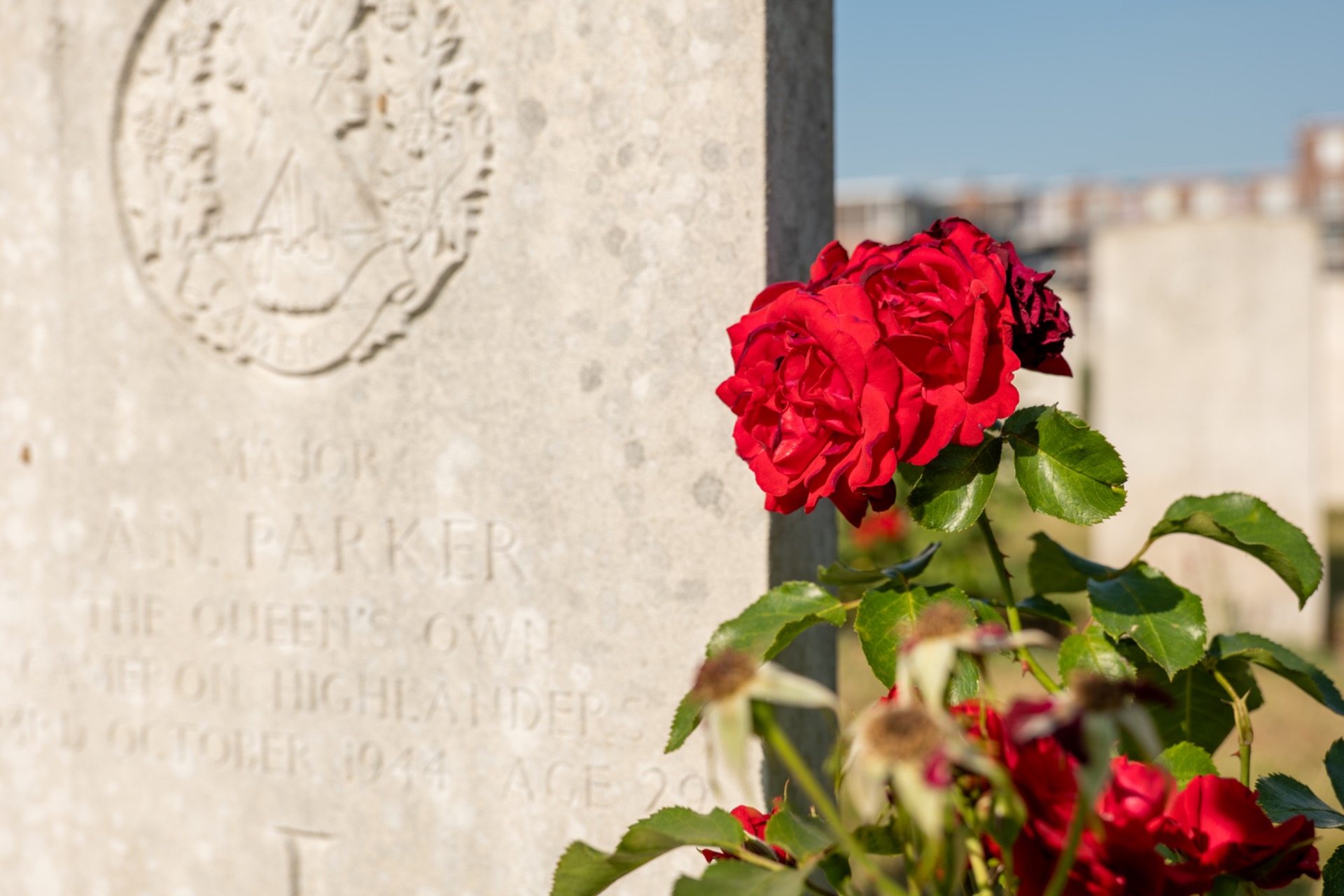The History
On this page, you will find the timeline of the Uden War Cemetery, highlighting the key moments in the history of this remarkable burial ground. The timeline provides an overview of how the war cemetery was established and how it has developed over the years.
Would you like to know more or receive the full, detailed history? Please feel free to send us an email.

15 June 1941
The crew of a British aircraft shot down near Schaijk on 12 June are buried in a small, unconsecrated section of the cemetery next to the Roman Catholic cemetery of St Peter's Church.
The first three to be buried were Sgt. J.A. Barron (aged 26, from Eccleshill, Bradford), Sgt. J. Beattie (aged 20, from Aberdeen, Scotland), and Flt. Sgt. A.E. Hibbin (aged 24, from Hammersmith, London).
They served with the 99th Squadron of the Royal Air Force.
11 March 1942
The burial ground has become full, and from now on burials take place in the rectory garden.
Spring 1943
The rectory garden is also full. Burials are moved to the old Roman Catholic cemetery, located between the then streets Oude Kerk and Oude Kerkpad — the site of today's war cemetery on Burgemeester Buskensstraat.
This was the burial ground of the St Peter's Church, which had burned down in 1886.
27 May 1943
The first burials of Allied servicemen take place — the crew members of downed Lancaster bombers.
1944 and 1945
Several reburials are carried out by the British Army's burial unit, transferring soldiers from various field graves.
June – late September 1946
A major reburial operation marks the final establishment of the Uden War Cemetery.
The reburials are carried out by the 55th Graves Concentration Unit of the British Army.
A number of deceased Polish soldiers are also buried here.
In total, 701 of the 703 fallen servicemen are identified; two remain "Known unto God."
The youngest soldier was 17 years old, the oldest 40.
1951
The cemetery is officially handed over to the United Kingdom.
It is the only Commonwealth war cemetery located within a built-up area.
From the 1980s onwards
Local residents Ties and Toos Verstegen, who lived opposite the cemetery, become increasingly involved. It began when they invited a few British visitors into their home during a rain shower.
Over the years, they received support from several people from Uden, leading in 1993 to the establishment of the Stichting Oorlogskerkhof Uden (Uden War Cemetery Foundation).
Ties and Toos regularly welcomed visitors, inviting them in for coffee and home-baked cake.
From 1991
At the initiative and invitation of the Foundation, relatives of the fallen soldiers visit Uden around Dutch Remembrance Day (4 May). They stay with local host families.
In recent years this has no longer been centrally organised, and relatives now visit independently. Some families have maintained strong ties with their Dutch hosts and still return every year.
21st Century
In November, Remembrance Day is commemorated at the cemetery.
For several years now, candles have been lit on Christmas Eve at every grave by the board and many volunteers.
The D-Day Dodgers organisation searches for photographs of the fallen soldiers and places them by the graves before each commemoration. With the help of an English lady, they have so far found photos of more than 400 soldiers.
6 May 2025
For the first time, primary school pupils from De Cirkel School (Years 5–8) hold their own remembrance ceremony at Uden's monument and the war cemetery.
In preparation, they learn about the Second World War at school. During their visit, they have the opportunity to speak with British relatives of the fallen.